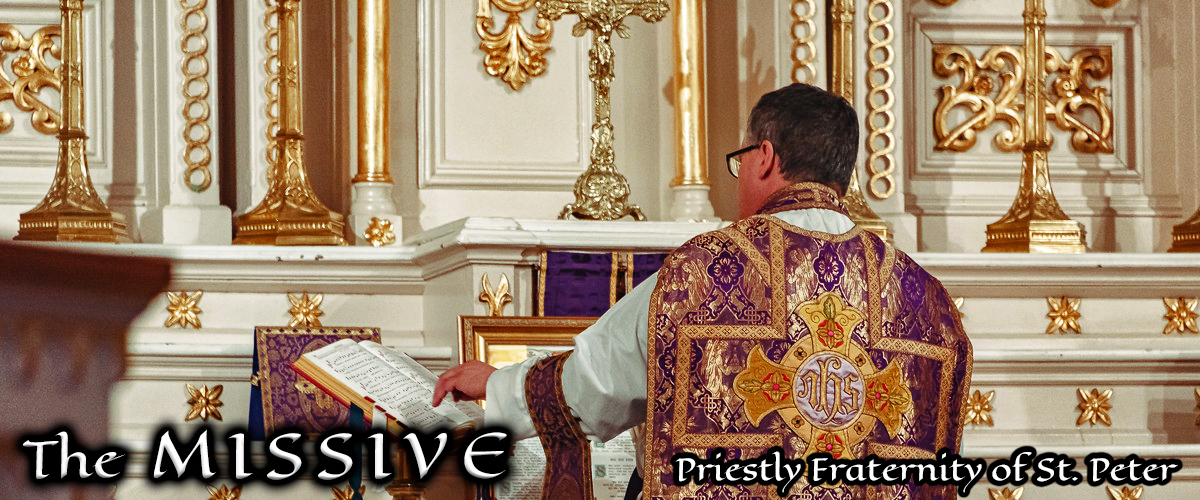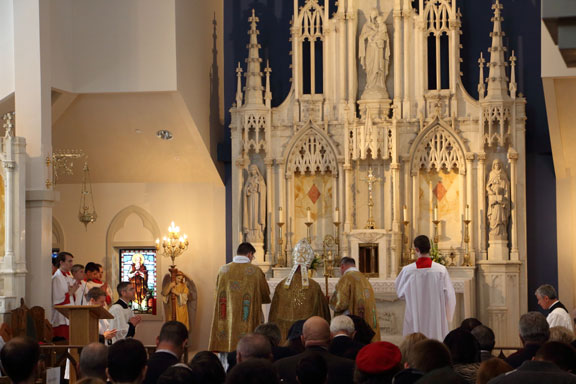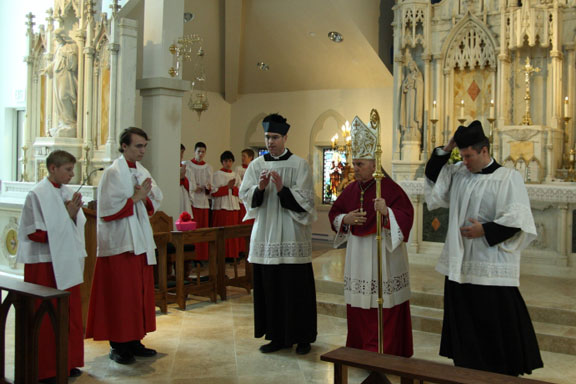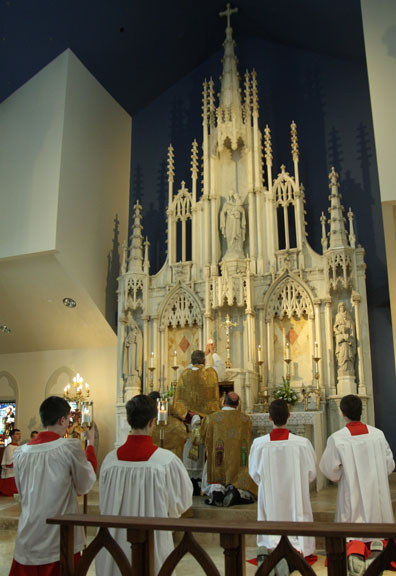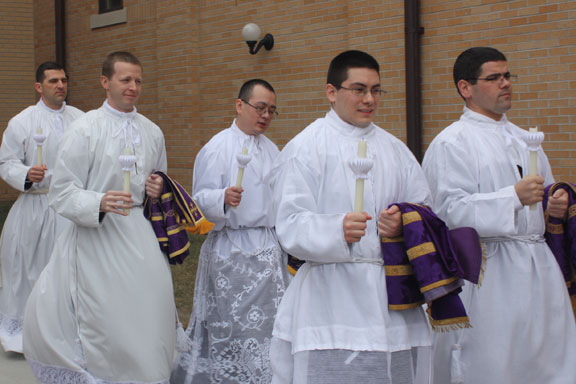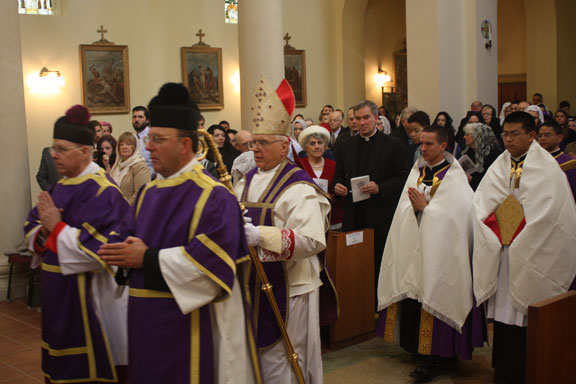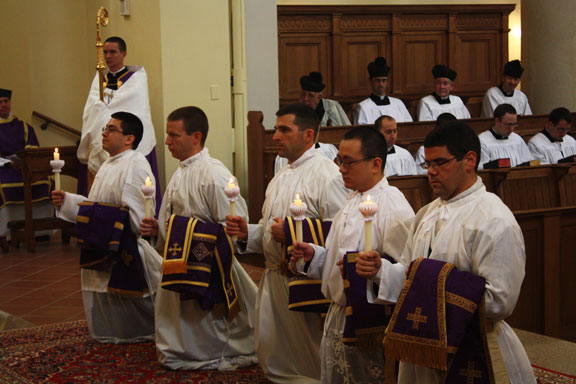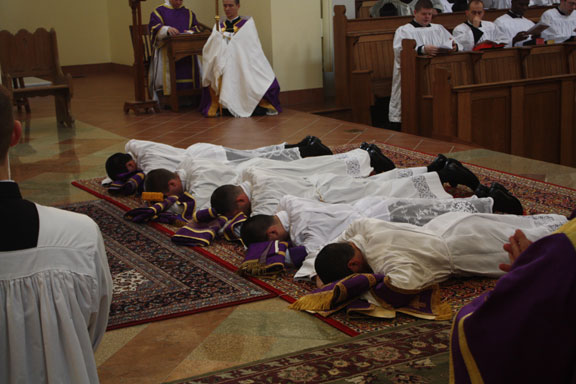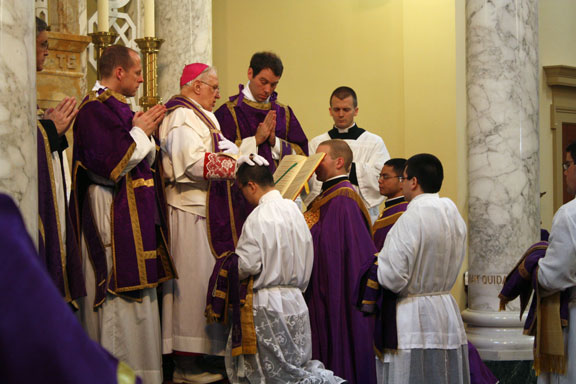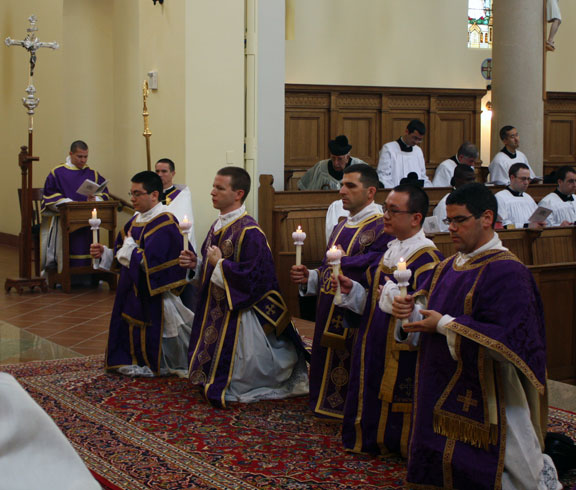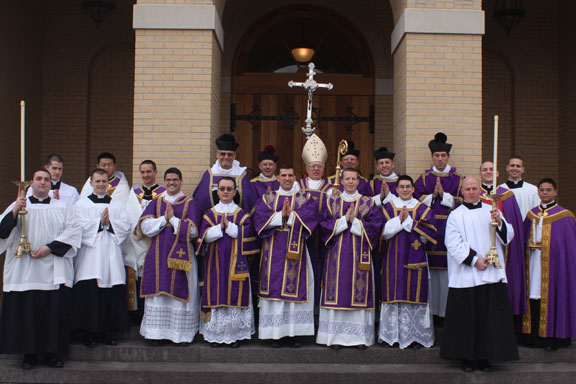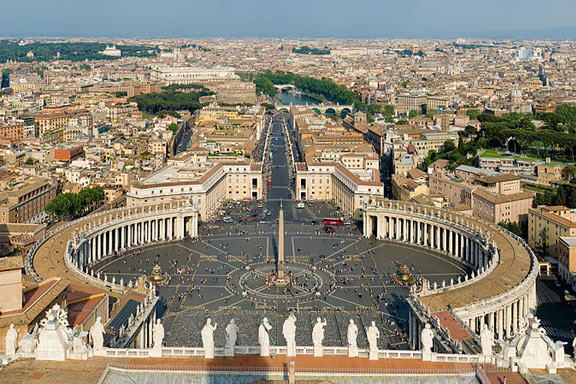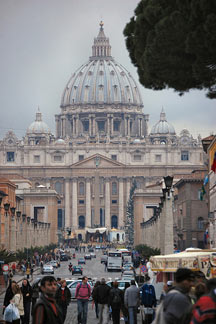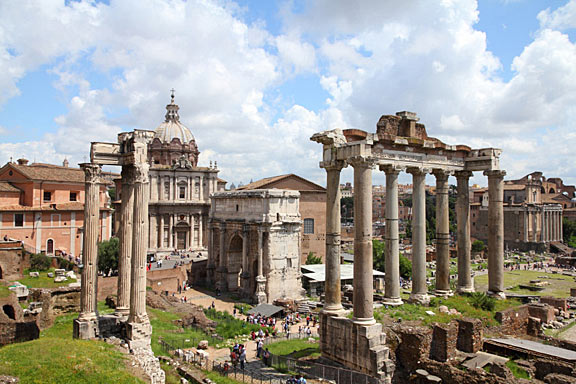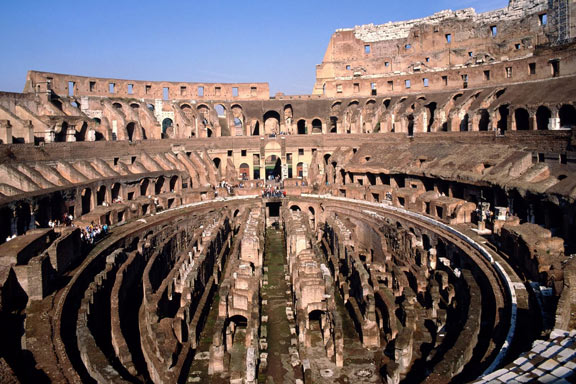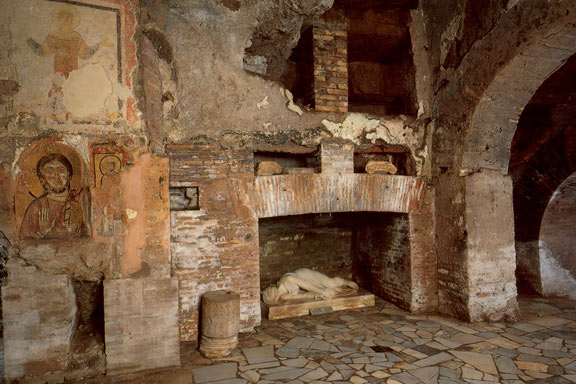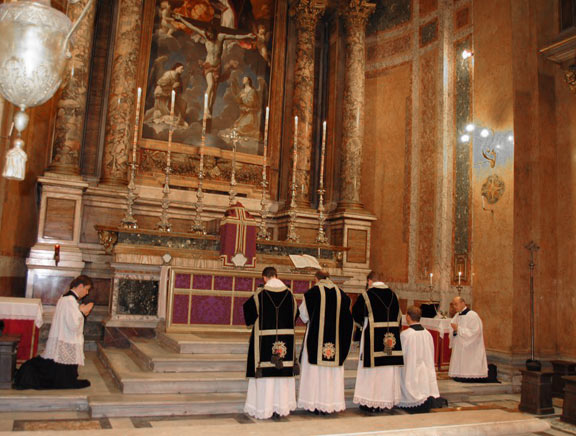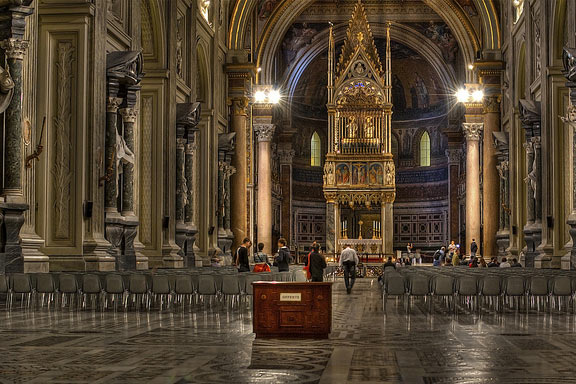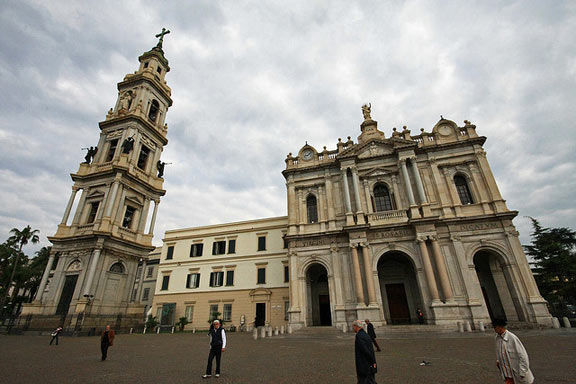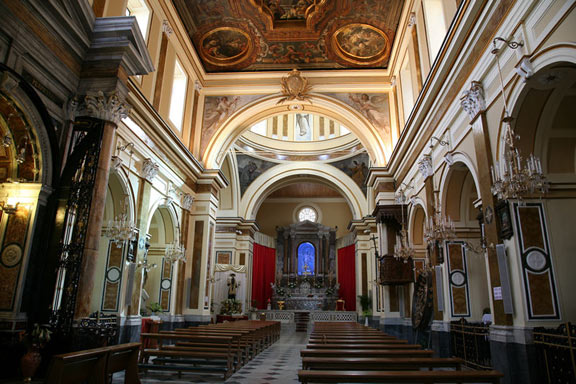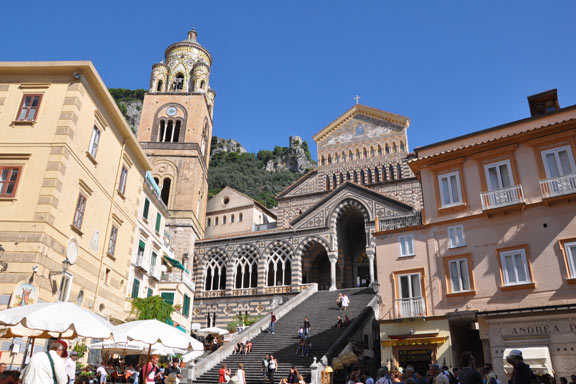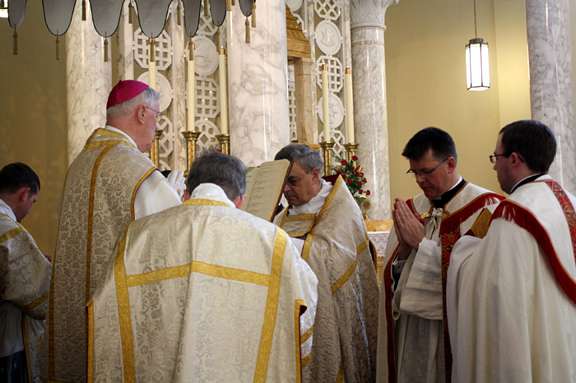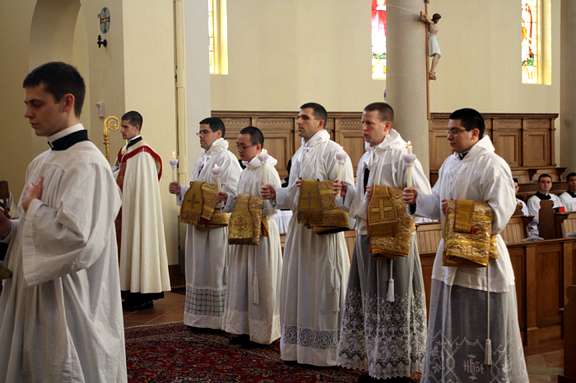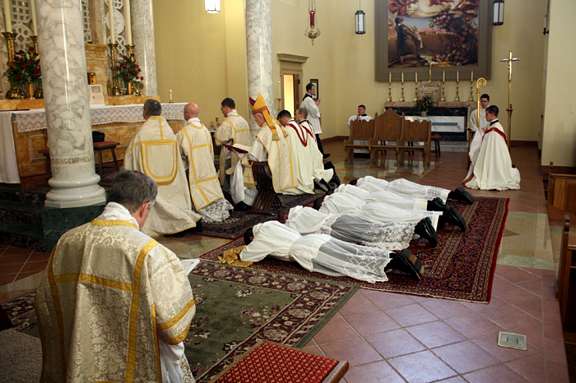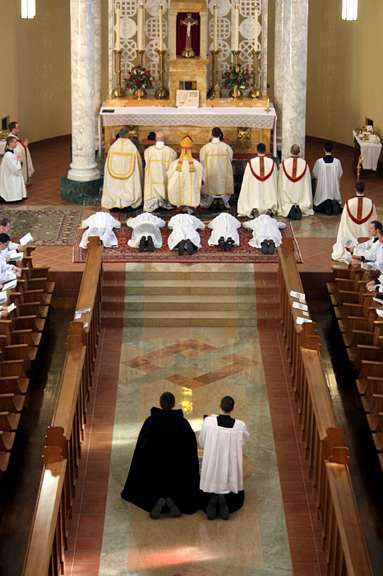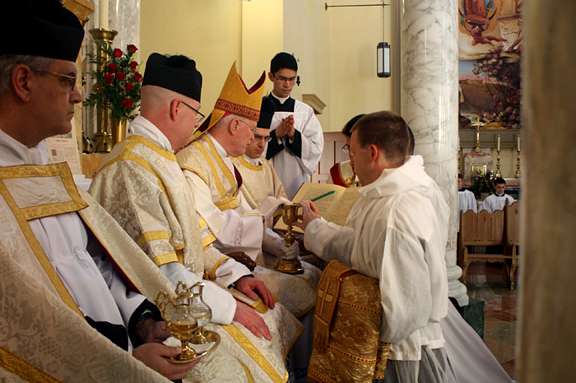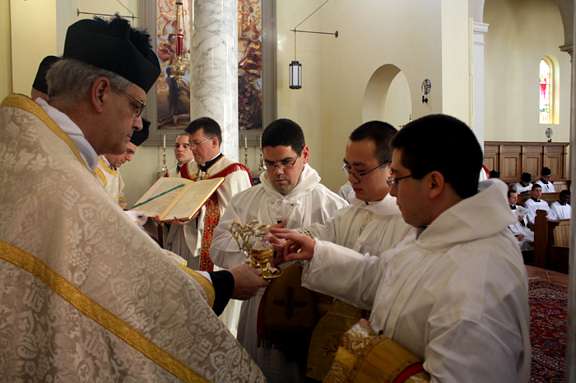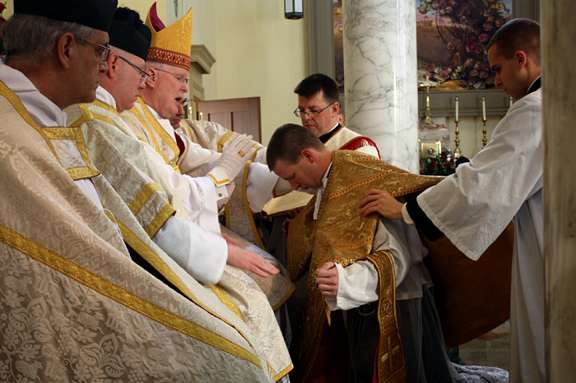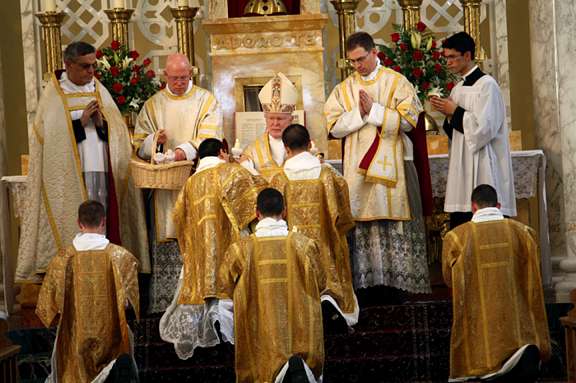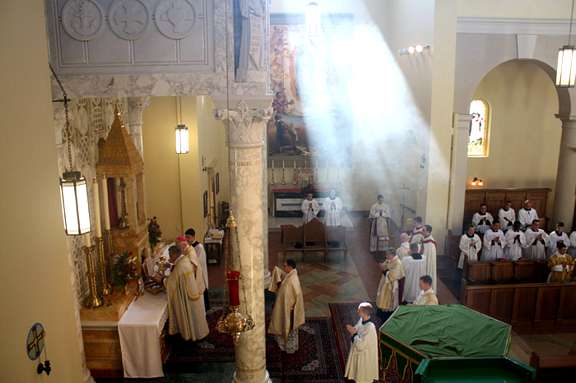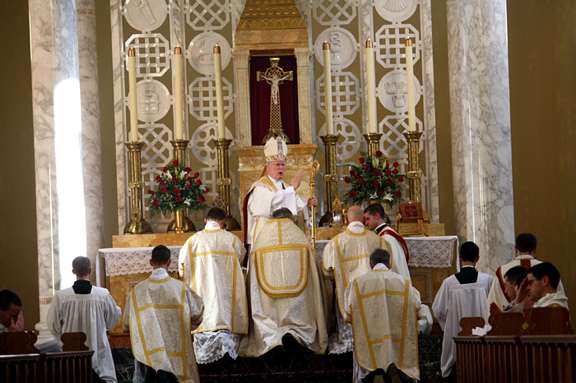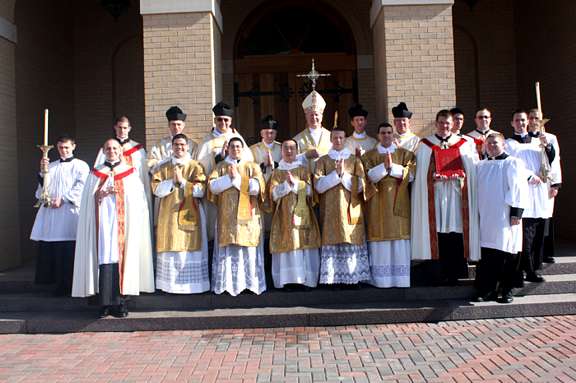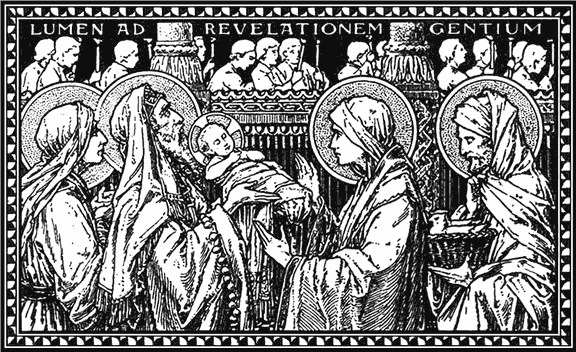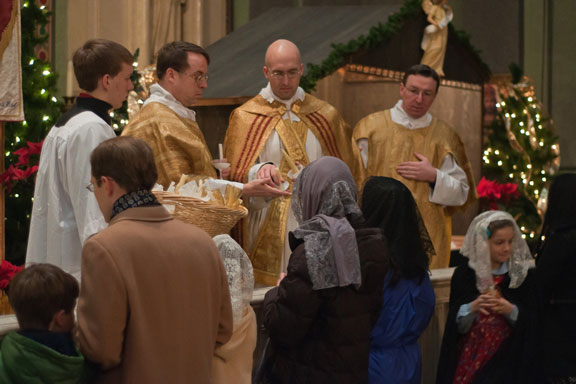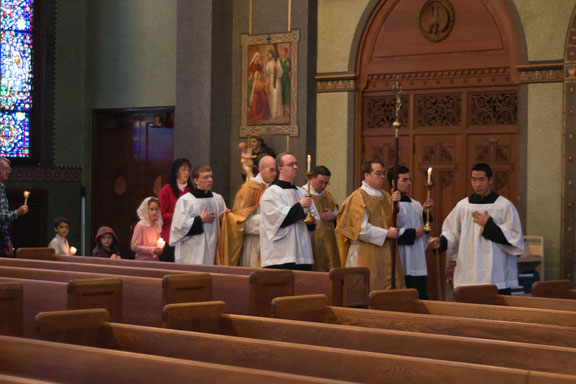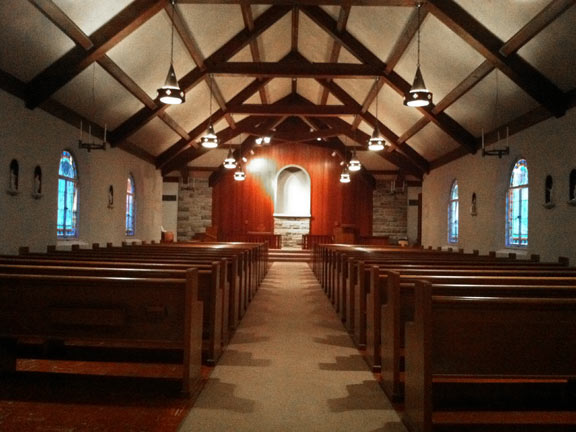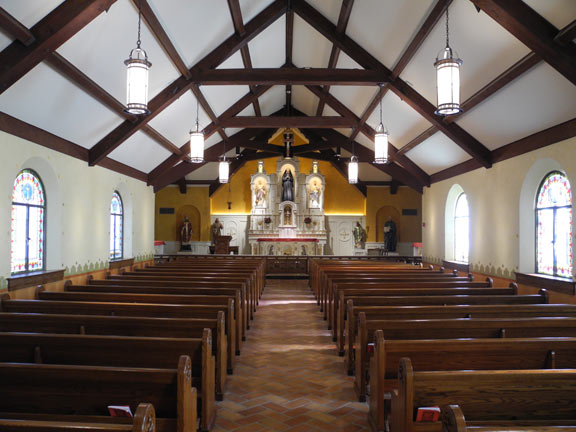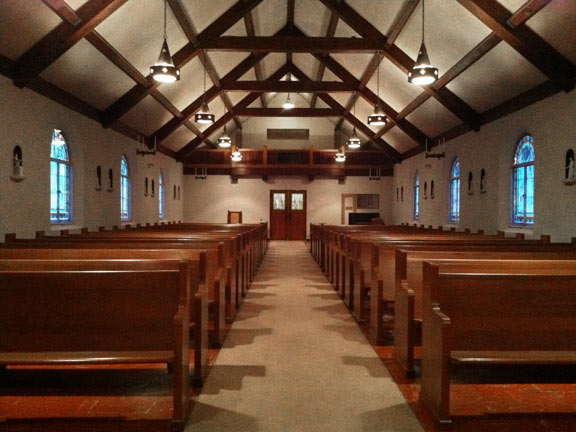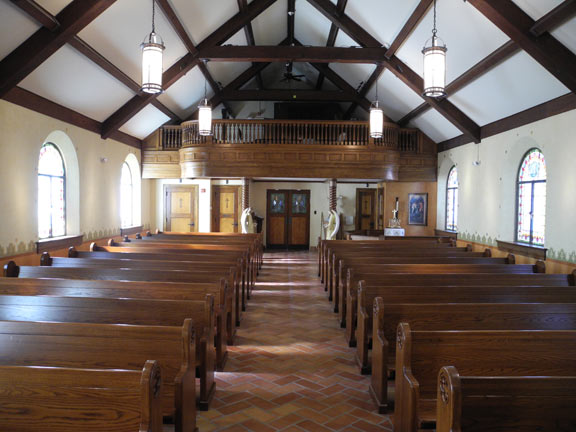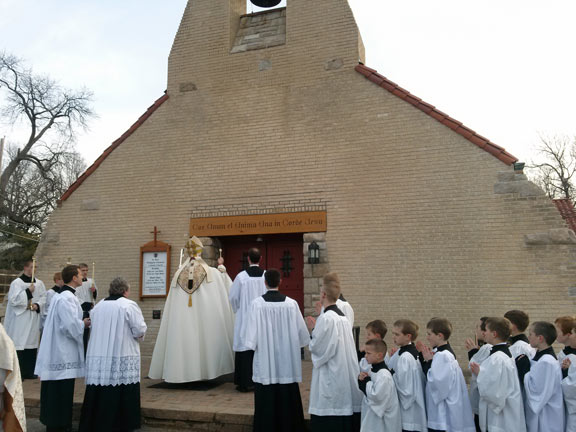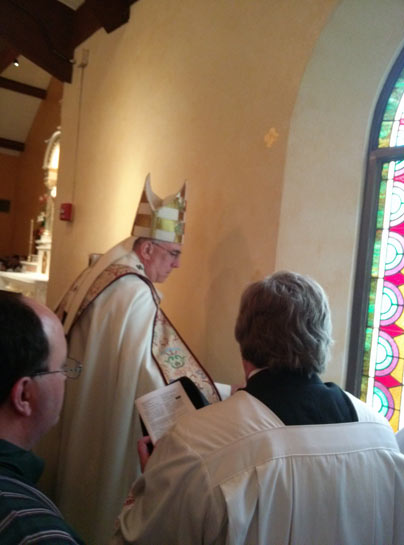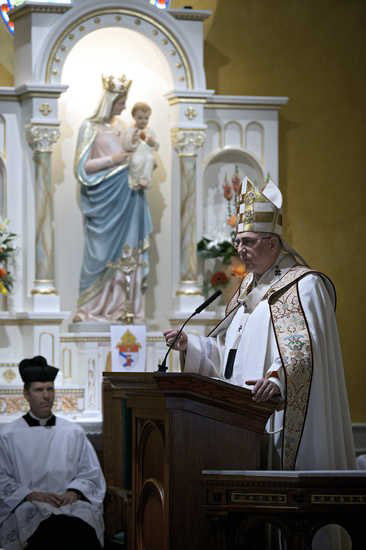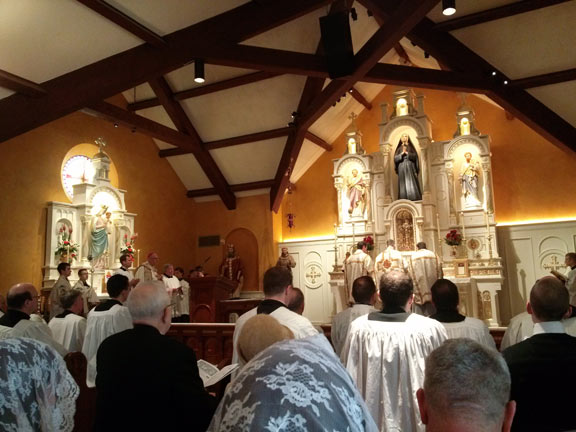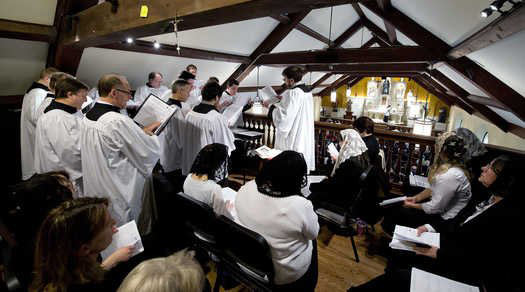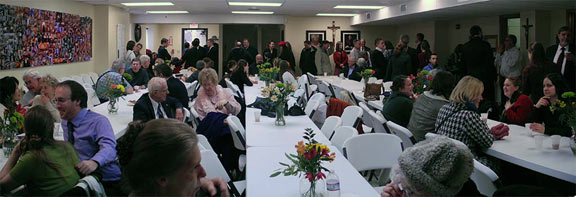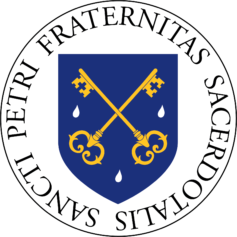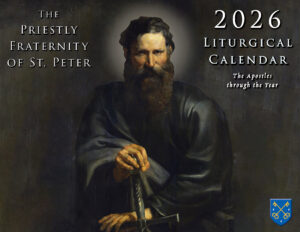Palm Sunday: the Beginning of Holy Week, in Images
Entering the holiest of week of Passiontide, we look at images from Palm Sunday at Holy Family, our apostolate parish in Dayton, Ohio.
Commemorating Our Lord’s triumphant entry into Jerusalem, palms are blessed before Mass begins and the Gospel account of Our Lord’s entry into Jerusalem from Saint Matthew is read. As the palms are distributed, a pair of antiphons are sung in the midst of chanting Psalms 23 and 46. Afterwards, the faithful process in commemoration, palms in hand, to give glory to the Lord of Hosts. As they do, a series of hymns, psalms and seven antiphons are chanted, including the hymn Gloria, Laus et Honor, composed by Theodulph of Orléans in 810.
Mass of Palm Sunday then continues as other Sundays, with the Passion of Saint Matthews as the Gospel of the day, sung or chanted by three clerics. Msgr. John Fritz was celebrant for the Mass, assisted by Rev. Mr. Michael Flick, FSSP, as Deacon and Fr. Mark Wojdelski, FSSP, as SubDeacon.
April 1, 2013
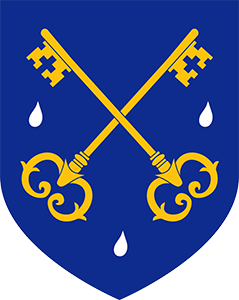
Our Lady of Mount Carmel in Denver Celebrates Dedication of New Church
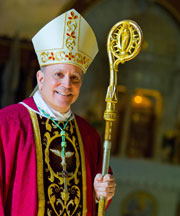 Fr. James Jackson, FSSP, and the parishioners of Our Lady of Mount Carmel parish have seen the fruits of their common vision realized in the dedication of their new parish church. The dedication came this past Saturday, March 23, 2013, amid the snows of late winter.
Fr. James Jackson, FSSP, and the parishioners of Our Lady of Mount Carmel parish have seen the fruits of their common vision realized in the dedication of their new parish church. The dedication came this past Saturday, March 23, 2013, amid the snows of late winter.
Undaunted by the elements, priests and parishioners welcomed His Excellency Samuel J. Aquila, Archbishop of Denver, along with our District Superior, Fr. Eric Flood, FSSP, and the Archbishop’s secretary, Fr. Matthew Book, for the dedication of the new church.
Established in 1996 in Littleton, Colorado (a suburb of Denver), this is one of the District’s older apostolates. In recent years the priests and parishioners of the community realized they were in need of a new church, with space becoming limited and the previous building becoming too difficult to maintain. The idea of a new parish was preached, choices and plans were made, and finally, construction was completed. The priests and faithful of the parish can now enjoy the result of their great endeavor. See the progress of construction in Renewal: Our Lady of Mt. Carmel in Denver Builds a New Parish Home.
The North American District congratulates the community on their beautiful new home. Some first images of the dedication appear below. Expanded coverage and pictures from the dedication will be seen both here and in our newsletter.
Not subscribed to our free, monthly newsletter? Do so here.
March 26, 2013

Pastoral Confirmations in Denver and Atlanta
The Sacrament of Confirmation beseeches the Holy Ghost to perfect and seal the presence of His sevenfold graces in the soul of the confirmed. Sacramentally, the bishop is the sole ordinary minister of Confirmation, but he is free to delegate the faculty to pastors, should the need arise. This faculty was thus given to two of our pastors, Fr. James Jackson, FSSP, pastor of Our Lady of Mount Carmel in Denver, and Fr. Matthew McCarthy, FSSP, pastor of Saint Francis de Sales in Atlanta.
Confirmation imparts:
- an increase of sanctifying grace which perfects the recipients Christianity
- a redoubling of the sevenfold graces of the Holy Ghost first given at Baptism, especially the strength and courage required to confess without fear the Name of Jesus Christ
- an indelible mark on the soul, so that it can only be received once
The Fraternity gives thanks to God for the newly confirmed. Images follow from Denver and Atlanta.
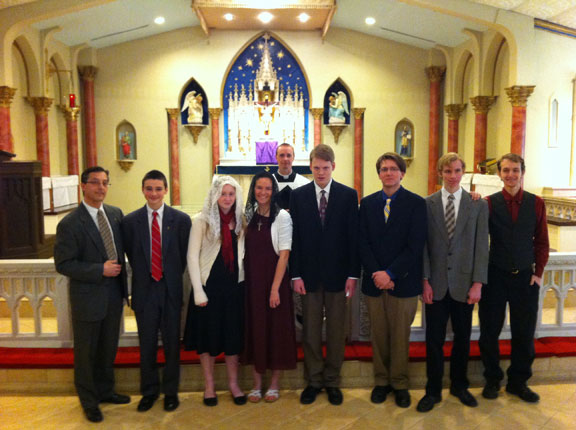
March 20, 2013

Five Ordained to the Diaconate for the Fraternity by Bishop Fabian Bruskewitz
On Sitientes Saturday, March 16, 2013, Bishop Emeritus Fabian Bruskewitz traveled to Our Lady of Guadalupe Seminary in Denton, Nebraska, in order to confer the Diaconate upon five Subdeacons:
- Paul Leung
- Daniel Nolan
- Michael Flick
- Joshua Passo
- Joseph Heffernan
We express our thanks and gratitude to Bishop Bruskewitz, the retired Ordinary of Lincoln, Nebraska, for returning to Our Lady of Guadalupe Seminary this year to confer the Diaconate.
The name of this Saturday, Sitientes, means “you that thirst,” and is taken from the first word of the Introit of the Mass, “All you that thirst come to the waters, saith the Lord: and you that have no money, come and drink with joy.”
Sitientes Saturday is a traditional day on which ordinations are conferred.
The process of ordination began on Friday, March 15, as the five Subdeacons made their Assumption of Celibacy, recited the Profession of Faith, and took the Oath of Fidelity in the presence of Bishop Bruskewitz. The next day, Sitientes Saturday, Bishop Bruskewitz ordained them to the Diaconate (see pictures below).
We send our congratulations to the families of the newly ordained Deacons, and thank all of the family and friends that were present to celebrate this joyous occasion with us. The Fraternity asks that all of our supporters please pray for these five men during their Diaconal period, and for their pending Ordination in 2014.
Additional coverage of this year’s ordinations will be in our upcoming Newsletter.
Don’t receive the newsletter currently? Sign Up Here
March 18, 2013

Habemus Papam! The North American District Welcomes Pope Francis
The North American District welcomes the accession of the Most Eminent and Reverend Jorge Cardinal Bergoglio, SJ, to the Sovereign Pontificate, taking as his name Pope Francis.
We ask all of our supporters to join with us in continually offering daily prayer and sacrifice that his pontificate may occasion the increase of faith, hope and charity throughout the Church, and the world.
May Pope Francis be filled with the courage and fortitude needed to steer the Barque of Peter amid the turbulent seas and rough winds in which we find ourselves, for the Psalmist tells us, “He that dwelleth in the aid of the most High, shall abide under the protection of the God of Jacob. He shall say to the Lord: Thou art my protector, and my refuge: my God, in him will I trust. For He hath delivered me from the snare of the hunters: and from the sharp word.” ~ Psalm 90:1-4
We beseech Our Lord Jesus Christ, Head of His Mystical Body, the Catholic Church, to increase the love of the Deposit of Faith and our sacred traditions amongst the episcopacy, clergy, religious and laity, so that through the shepherding hand of Pope Francis, the Divine assistance will remain with us, that we might witness the triumph of the Immaculate Heart of Mary and continue to restore all things in Christ.
March 13, 2013

Confraternity Plans 25th Anniversary Pilgrimage to Italy in October
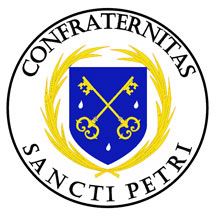
The Confraternity of Saint Peter is welcoming Fraternity supporters to attend a pilgrimage to Italy to celebrate the 25th anniversary of the Priestly Fraternity of Saint Peter. The pilgrimage will be held from October 14-23, 2013, being led by Fr. James Fryar, FSSP, the Chaplain of the Confraternity of Saint Peter.
Dates: October 14‐23, 2013
Approximate Cost: $3595 all inclusive from NYC, double occupancy (single occupancy +$395)
For more information and questions, call Tish Gallagher at (916) 223-3112 or review the pilgrimage on Syversen Tours.
Download the Flyer (includes terms and conditions)
- Round trip, non‐stop air from JFK in NYC, all airport taxes
- Land travel by luxury motor-coach
- 3 hotel accommodations w/ private bath
- Breakfast & dinner daily
- All touring as indicated on itinerary
- Daily Holy Mass
Highlights of the Pilgrimage:
- A Solemn Mass of Thanksgiving in Rome on the 25th anniversary of the FSSP
- A General Audience with Pope Francis
- The four Major Churches of Rome
- The Catacombs (secret underground burial places of the early Christians)
- The Holy Staircase (Scalla Santa) on which Christ climbed to meet Pilate
Shrines of St. Gerard Majella, St. Maria Goretti & St. Philomena
Rosary Basilica of Pompeii (tomb of Bl. Bartolo Longo) and the ancient ruins of the old city - The home of St. Guiseppe Moscati, the holy Doctor of Naples
- The tomb of St. Andrew the Apostle
- The exquisite towns and scenery of the Amalfi Coast
Daily Itenerary:
Day 1 – Evening flight departure from NY JFK Airport on-board a flight to Rome, Italy.
Day 2 – Morning arrival at the Rome Fuimicino Airport and transfer to downtown Rome for
check-in at the Hotel Conciliazione within close walking distance to St. Peter’s
Square & Basilica. Time to rest in the afternoon followed by Holy Mass at the FSSP Church
later in the day.
Day 3 – This morning join with pilgrims from all over the world for an audience with the Holy Father on St. Peter’s Square. Afternoon tour to visit two of Rome’s major basilica’s; St. Mary Major & St. Paul Outside the Walls. Passing by the ruins of the Roman Forum and the Coliseum, our first stop will be at St. Mary Major, one of the first shrines dedicated to Our Lady. Among its highlights are the Crypt of the Nativity (containing relics of the cradle of Our Lord) & the tomb of St. Pius V, the “Holy Pope of Lepanto”. Next, visit the Basilica of St. Paul Outside the Walls, built over the tomb of St. Paul, “the tireless traveler of Christ”.
Day 4 – Morning visit to St. Peter’s Basilica as well as one of the Catacombs. As the principal church of the Pope, St. Peter’s is among the most sacred sites in all of Christendom as it is built over the burial site of its namesake; Peter the Apostle, first Bishop of Rome. Continue on to one of the Catacombs, the underground tunnels where the early Christians buried their dead during the persecutions. Afternoon at leisure. You may want to take this time to climb the Spanish Steps, see the grand fountains of Bernini at the Piazza Navona and marvel at the breathtaking interior of the ancient Pantheon.
Day 5 – Today is the 25th anniversary of the founding of the Fraternity of St. Peter on Oct. 18, 1988. Join with Fraternity priests and laymen at a Solemn Mass of Thanksgiving at the FSSP Rome Parish of Santissima Trinita dei Pellegrini. Also visit the original Vatican, the Basilica of St. John Lateran. Within the main altar of this basilica is the wooden altar on which St. Peter offered Mass while in Rome. Adjacent to St. John Lateran is the Church of Scalla Santa, built to enclose the staircase that Christ walked up to meet Pontius Pilate.
Day 6 – Morning check-out and departure south for the ancient city of Pompeii. Afternoon arrival and visit of the Basilica of Our Lady of the Rosary, founded by Blessed Bartolo Longo, “Apostle of the Rosary”. Visit the basilica and the famous ruins of the old city, destroyed and partially buried during the two day eruption of Mt. Vesuvius in 79 AD. Late afternoon arrival and check-in at the Hotel Casa Del Pellegrini in Sant’Anastasia, next to the Shrine of Madonna dell’Arco, where we will spend the next three nights.
Day 7 – Full day excursion to the shrines of St. Gerard Majella, the 18th Cnt. patron of expectant Mothers and falsely accused, in Materdomini, and St. Philomena, powerful 4th Cnt. virgin martyr, in Mugnano del Cardinale. Late afternoon return to Sant’Anastasia.
Day 8 – A day along the exquisite Amalfi coast! Upon arrival in the picturesque town of Amalfi, visit the Cathedral of St. Andrew, wherein are the relics of this great Apostle of the Cross. Time at leisure in Amalfi before returning to Sant’Anastasia.
Day 9 – Morning check-out and departure for Rome, first stopping to visit the Shrine of St. Guiseppe Moscati, the holy doctor of Naples. Continuing north, we will stop in Nettuno to visit the Shrine of St. Maria Goretti, 19th Cnt. “Lily of Purity” and Patroness of Youth. Late afternoon arrival and check-in at our hotel near the Rome Airport. Farewell Dinner.
Day 10 – Morning departure from Rome FCO for our return flight to NYC.
March 4, 2013

Renewal: Our Lady of Mt. Carmel in Denver Builds a New Parish Home
After a time of recollection and prayer, Fr. James W. Jackson, FSSP, pastor of our Denver apostolate, began to talk about the needs of his parish with the faithful. As he put it, “There is a point where you cannot suitably maintain an existing building, and you have to think about the options you have.” With this reality, one of our older apostolates, Our Lady of Mount Carmel in Littleton, Colorado, began to contemplate the idea of building a new parish home.
Choices had to be made, like whether to find new land and move, modify the existing structure to a new form, or start from a blank slate. With more time and reflection, the decision was made to stay where they were and replace the existing building with a new church on the same property.
This decision, however, created a new problem: Where was the parish to offer Mass while the construction was ongoing? As fortune has it, the adjacent property in Denver is a funeral home. Due to a well-established and friendly relationship, Our Lady of Mount Carmel was able to carry on with Mass and the Sacraments next door, until the construction was complete.
Then more questions needed to be answered. Choices on construction, materials, design, and the size and scope of the final parish campus had to be decided upon, along with fundraising. On this note, the parish is an anomaly. There has been no specifically crafted capital campaign that is typical of parish construction in the Church today. Instead, like the priests of old, Father began to talk about it from the pulpit, and the pledges of support came to fruition naturally. A local contractor with extensive experience in building churches was chosen, and the project got under way in the fall of 2012.
Demolition of the parish began in November. Construction is on track to be completed, and the parish ready for re-dedication, in March of 2013. What follows is a collage of images detailing the renewal of a parish through the building of a new church edifice.

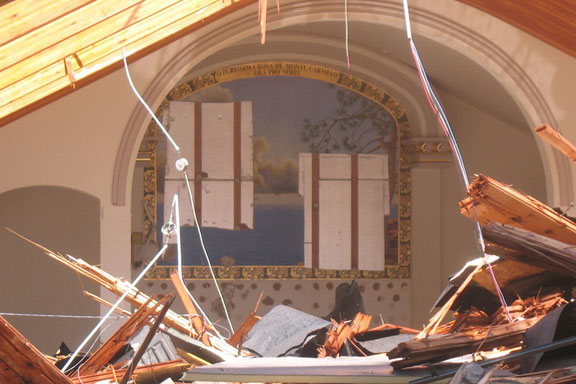
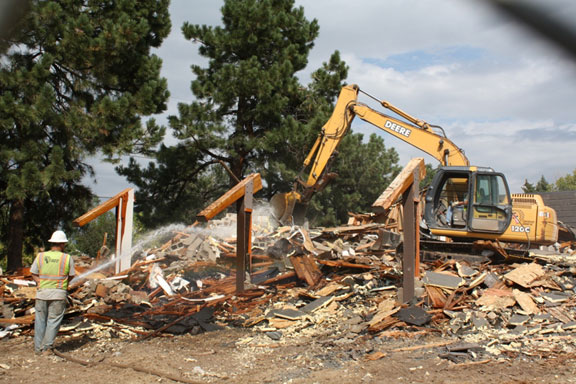
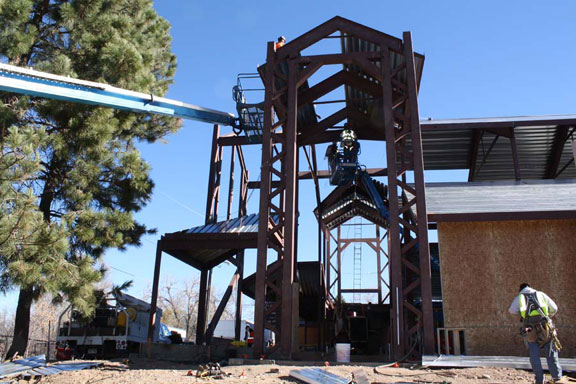
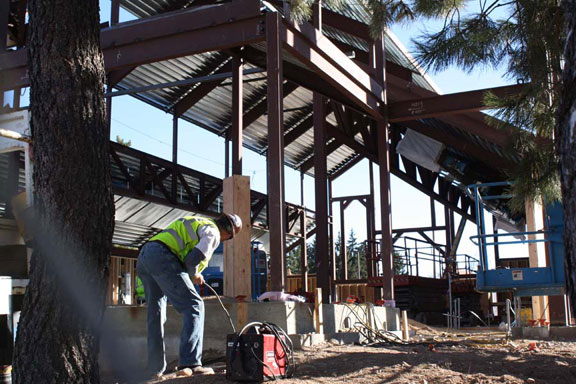

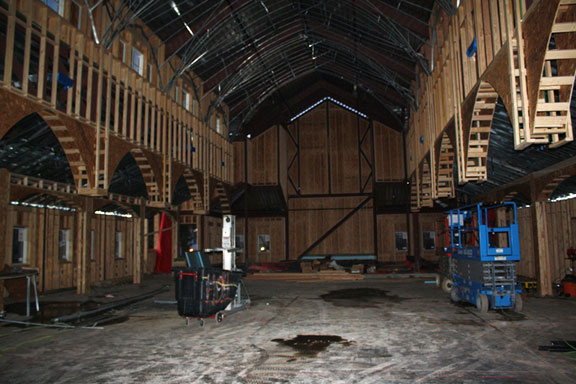
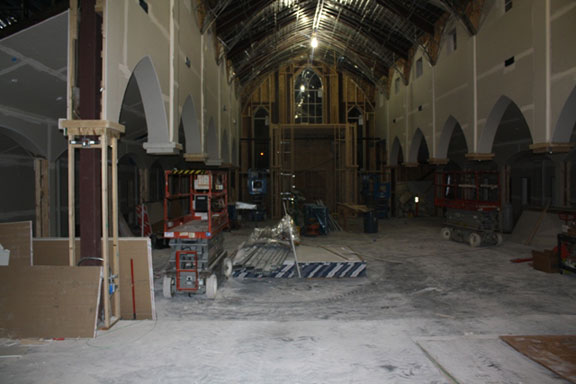

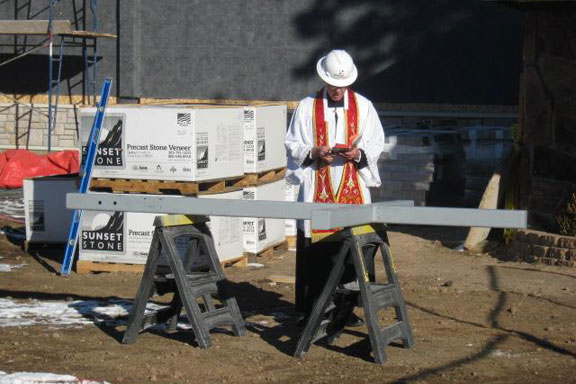
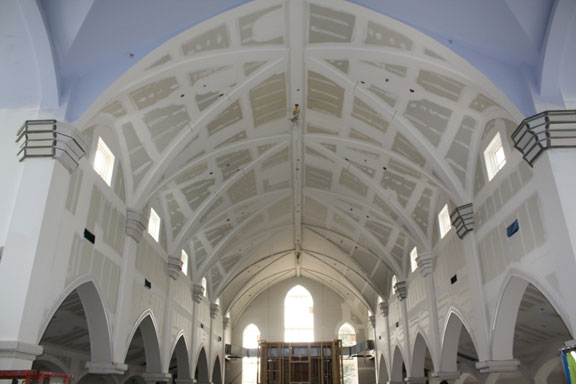
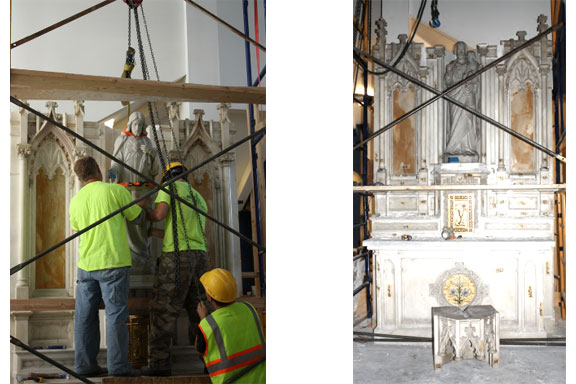
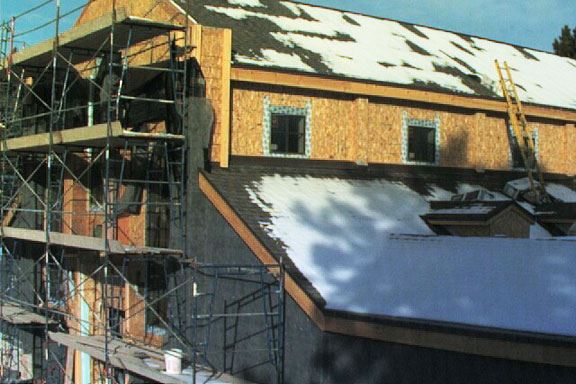
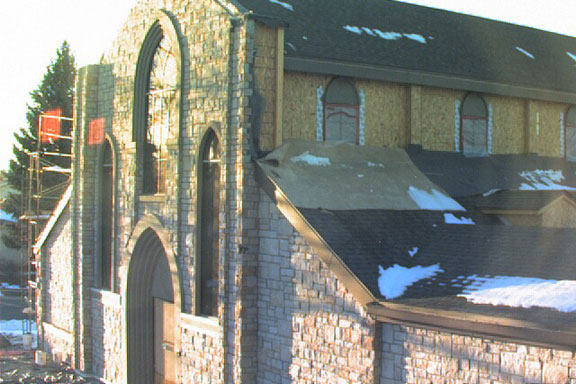
February 28, 2013

Bishop Timlin Confers the Subdiaconate on Five Seminarians
His Excellency, Bishop James Timlin, Bishop Emeritus of the Diocese of Scranton, traveled to Our Lady of Guadalupe Seminary on Saturday, February 9, 2013, to confer the Major Order of Subdiaconate upon five seminarians.
We congratulate the five men raised to the Subdiaconate, and express our esteem and gratitude to His Excellency for his many years of guidance and conferral of Sacraments for the clergy and laity of the Fraternity.
Thanks are also in order for all of the family and friends that traveled to the seminary for this blessed event. Please, in your kindness, commend these five men to your prayers, that they may continue on the path of the Priesthood of Christ. We also ask that you continue to keep all the priests, deacons, subdeacons and seminarians of the FSSP in your prayers.
More coverage and pictures are in a forthcoming newsletter. If you do not receive our newsletter, please sign up for the Fraternity newsletter.
February 15, 2013

Candlemas, the Purification of the Blessed Virgin Mary
Apostolates around North America concluded the Christmas season with the Feast of the Purification of the Blessed Virgin Mary, also known as Candlemas.
According to Mosaic Law, a mother who had given birth to a son remained unclean for 40 days after birth, in which time she completed her purification in blood. After the 40 days, the new mother was to “bring to the temple a lamb for a holocaust and a young pigeon or turtle dove for sin” (Leviticus 12), where a priest prayed for her and she was cleansed.
Mary complied with this precept of the Mosaic Law, and redeemed Our Lord from the temple according to the law established by God, “Whatsoever is firstborn of all flesh, which they offer to the Lord, whether it be of men, or of beasts, shall belong to thee: only for the firstborn of man thou shalt take a price, and every beast that is unclean thou shalt cause to be redeemed…” (Numbers 18) In this act, Mary’s Immaculate Heart is pierced with a sword of sorrow by the prophecy of Simeon.
The celebration of the Purification of Mary is known to have been celebrated from the times of persecution, for we see its celebration in the Church at Jerusalem in the time of Constantine’s conversion. At first celebrated 40 days after Epiphany, when Epiphany celebrated the Nativity of Our Lord, the Feast settled on February 2 after the Feast of the Nativity was established on December 25. In the Eastern Church it was called Hypapante tou Kyriou, the meeting of the Lord and His mother with Simeon and Anna.
During the Feast today, the priest offers five prescribed orations before he blesses beeswax candles by sprinkling and incensing. The candles are then distributed while the Canticle of Simeon is sung with the antiphon “Lumen ad revelationem gentium et gloriam plebis tuæ Israel,” “A Light to the revelation of the Gentiles, and the glory of thy people Israel,” repeated after every verse. Then follows the procession, and at which all the partakers carry lighted candles in their hands, the choir sings the antiphon “Adorna thalamum tuum, Sion”, composed by St. John of Damascus.
The solemn procession represents the entry of Christ, the Light of the World, into the Temple.
February 6, 2013

Archbishop Naumann Blesses St. Philippine Duchesne for the Kansas City Apostolate
by Fr. Justin Nolan, FSSP
Assistant Chaplain, St. Philippine Duchesne
A joyous day was had by all as we witnessed St. Rose Philippine Duchesne Catholic Church officially come into existence. All of Kansas City rejoices as a humble structure built by human hands has the supreme honor of becoming a dwelling place for Almighty God and the offering up the Eternal Sacrifice of His Son for the Redemption of sin and the Sanctification and Salvation of the world!
A chilly winter morning greeted the crowds and the arrival of Archbishop Joseph F. Naumann, Archbishop of the Archdiocese of Kansas City in Kansas. His Excellency performed the ceremony for the Blessing of a New Church. After the Blessing, the North American District Superior of the Priestly Fraternity of St. Peter, Fr. Eric Flood, FSSP, celebrated the First Solemn Mass in honor of St. Rose Philippine Duchesne with His Excellency, Archbishop Naumann, assisting from the Throne. Many visiting clergy were also in attendance, both from the Fraternity of St. Peter as well as local priests and religious from local parishes here in Kansas City. Over 400 of the faithful were in attendance, packing the new church and offering up their prayers in union with the Archbishop for the glory of God and the sanctification of souls.
Many countless hours of work have gone into this project and we thank all especially who were directly involved, our benefactors, our parishioners, the contractors and laborers who have worked so tirelessly these past months to make the church so beautiful and worthy of God and the Holy Sacrifice of the Mass. Visit the St. Philippine Duchesne parish website for more pictures.
January 23, 2013

